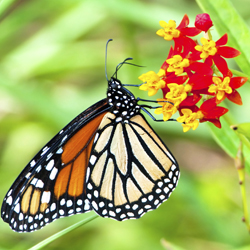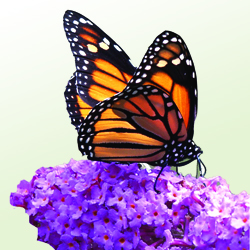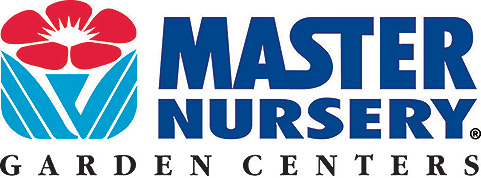Beautiful and graceful, varied and enchanting,
small but approachable,
butterflies lead to you the sunny side of life.
And everyone deserves a little sunshine.
–Jeffrey Glassberg
President of the North American Butterfly
Association and past President of Xerces Society
Does your garden have “flutter-bys” but you would prefer them to stay? Cheer up; it’s time to attract butterflies to your little slice of heaven. While you’re at it, you’ll be helping the butterflies, too!
Luckily, it’s easy to attract butterflies. Many common garden plants lure them in. Zinnias, marigolds, cleomes, lantana, salvia, herbs and coneflowers lead a long list. Additionally, the flowers of several easy-to-grow larger shrubs such as Butterfly Bush (Buddleia) and Orange Milkweed (Asclepias) attract our Lepidoptera friends.
The secret to attracting as many different types of adult butterflies as possible is to plant numerous types of plants, native and non-native, with nectar-rich flowers to ensure blooms from early spring to late fall. Providing specific host plants for caterpillar feedings guarantees your population for years to come.
Take the Monarch butterfly as an example. Because many urban gardens want only “civilized” plants in their landscape, and farms use herbicides to kill non-crops, the Monarchs no longer have unlimited access to its main habitat plants, several varieties of milkweeds. Planting Common, Showy or Buttery milkweeds provide security and food for this beautiful butterfly during its entire life cycle. The adult sips nectar from a variety of flowers but lays its eggs where the fussier caterpillars will like the food source. Aside from you watching the beauty of this life cycle, you’ll be helping to increase their dwindling population. Remember, eliminating or reducing general insecticides also helps.
Oh, do you think the native plants “aren’t attractive?” Take a look at the listing at the end of this article and perhaps you’ll change your mind. If you’re still not convinced, plant them in the back of your beds. You’ll still be able to enjoy the butterflies flitting around.
Another concern many people have is fear of caterpillars munching on the plants prior to becoming butterflies. Yes, it’s true caterpillars nibble plants. Fortunately, butterfly caterpillars are more selective in their food choices than moth caterpillars, thus they are less destructive. Moreover, since many caterpillars only eat their favorite natives, your fancier ornamentals will be safe.
Nevertheless, if you still don’t want to have caterpillars, there are two other ways to attract butterflies and fill their needs. A sheltered but sunny location with flat rocks is perfect for resting and basking in the sun. A pan, sunk to ground level and filled with constantly moist sand answers their need for moisture.
By the way, are you wondering how to tell the difference between a butterfly and a moth? Moths generally forage at night and have brushy or feathery antennae. Butterflies feed during the day and have thin club-shaped antennae. Now you’re an expert!
Pick up a book or field guide on butterflies from your garden center and identify your local butterflies. Then you’ll be able to plant their favorite party-foods and enjoy their company for a long time…
COMMON BUTTERFLIES and HOST PLANTS in the TRI VALLEY
| Butterfly | Host Plants |
| Cabbage White | Members of the mustard family |
| Gray hairstreak | Alfalfa, mallow, lupine |
| Monarch | Milkweed |
| Mourning Clock | Willow, poplar, alder |
| Pale Swallowtail | Buckeye flowers |
| Orange sulfur | Alfalfa, clover, vetch |
| Pipevine Swallowtail | Dutchman’s Pipe |
| Variable Checkerspot | Sticky monkey flower, CA bee plant, Indian warrior, English plantain |
| Westcoast Lady | Cheeseweed, Western hollyhocks lupines, mallow |




